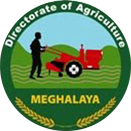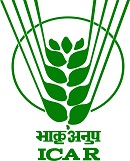News & Events
- Frontline Demonstrations
- On Farm Trials
- TRAINING CONDUCTED
- Vaccination Camp for Cattle against Foot & Mouth Disease (FMD)
- Celebration of International Women Day's 2019 by the KVK Jaintia Hills
- World Soil Health Day 2015.
- News Letter for the year 2013 - Vol. 4
- News letter for the year 2017 - Vol.7
- Major Problems Identified & Priority Thrust Areas
- Agro Climatic Zones
- Major Ecological Situations
- Major Farming Systems / Enterprises
- Training Programmes
- Other Extension Activities
- Literatures developed & Published
- West Jaintia Hills District Profile
- Resource Inventory of the District
Publication
- "Ka Dawai Bordeaux Mixture bad ka jingpyndonkam ia ka."
- Katto katne shaphang ki Dawai Bio pesticides Bad ka rukom pyndonkam ia ki.
- "Ka jingpang pyut ha u Sying bad ki lad ban iada ia ka."
- Ka Kalendar ia kiba Ri Dohkha.
- Ki Lad Jingiada na ki khniang bad ki jingpang ha u Kba.
- Ki Biofertilizers.
- Ka Rukom sara jhur.
- Ki Jingkylli ba iadei bad ka rep Tit Oyster.
- Ki Ain Iada Jingthung.
- Ki Symbai Tynrai.
- U Niang Byrnai.
Latest Activities
- Celebration of Mahila Kisan Divas by the KVK Jaintia Hills
- Training for the month of February 2018.
- Training for the month of January 2018.
- On farm Trials
- Front Line Demonstration
- Training Achievements.
Related Links
- Meghalaya Agriculture Portal
- ICAR Zone III Portal
- Indian Council of Agriculture Research
- Meghalaya Agricultural Portal
- Meghalaya Marketing Portal
- Meghalaya Portal
- KVK Ribhoi
- KVK West Khasi Hills
- KVK West Garo Hills
- India Portal
Last Updated on 26-06-2020
Major Ecological Situations
| Sl No. | Agro-Climatic Zone | Characteristics |
|---|---|---|
|
1. |
Temperate and sub-alpine zone |
This Zone confined in the Central plateau of the District in an area around Jowai, part of Thadlaskein Block. Climate: The rainfall in this Zone is around 2800 - 6000 mm which is well distributed. It is Humid and moderately warm and severe winter. The dominant geographic unit is upper and middle plateau. Cropping pattern: The main crops grown in this zone are paddy, potato. Vegetables like Tomato, bean, radish, carrot is also grown wherever irrigation facility is available. |
|
2. |
Sub Tropical Hill Zone |
This zone spread over the Northern Part of the District. i.e. (Laskein, and part of Thadlaskein,) are under this Zone.Climate : The average rainfall of this zone ranges from 1270- 2032 mm received in 150 days, about 70-80 % of annual rainfall is received during Monsoon period( June –September. The Maximum temperature of this Zone goes up to 20-27 degree C during April-May while minimum temperature is 6-9 degrees C during December-January. It is humid and Warm. Land use pattern: One of the characteristic of this zone is high percentage of cultivable land. The dominant geographic unit Hills is rolling and undulating piedmont Cropping Pattern: Major crops grown in this Zone are Paddy and Maize. |
|
3. |
Mild Tropical Hill Zone. |
This zone situated in the south western part of the district. Climate: Humid and warm, Very high rainfall which ranges from 4000 - 10000 mm mostly covered by semi deciduous forest. The maximum temperature ranges from 25-30 degrees C and minimum temperature ranges from 8-10 degrees C. The dominant geographic unit is severely dissected and undulating low hills, gentle to steep slope. The land is mostly covered with forest, land sometimes acidic in nature having poor fertility. Due to steep and undulated topography with high rainfall, soils are prone to erosion leading to heavy degradation. The soil type varies from red to loamy. Cropping pattern: This zone has most of the forest area of the District .The population of this region depends on Natural resources and forest products like broomsticks etc. The main crops grown in this zone are areca nut, Betel leaf, banana, and fruits. |








